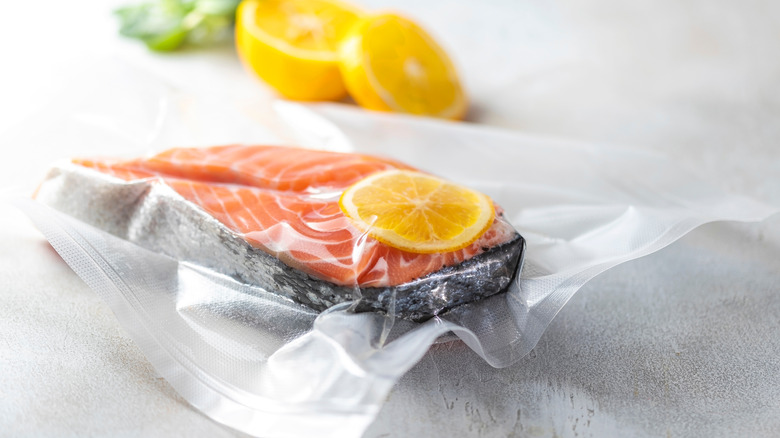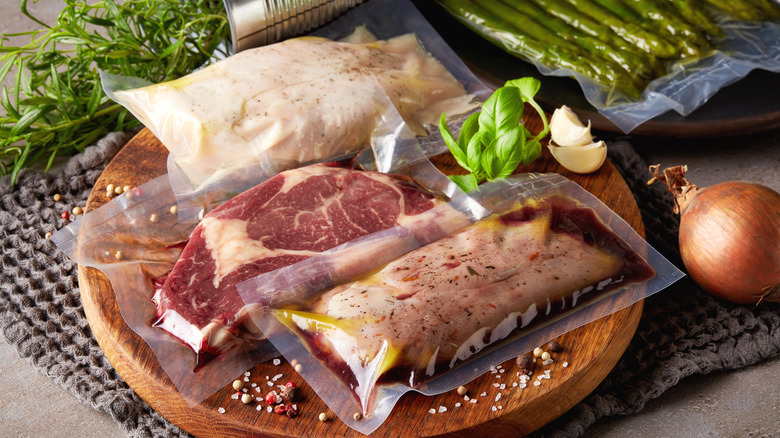The Reason Sous Vide Is Vacuum-Sealed
When most home cooks hear the words sous vide they tend to balk, and we understand. Using the sous vide method to cook your foods may seem like something out of science fiction, like Star Trek or The Jetsons, but trust us, it not only works, but is an awesome way to cook even the trickiest foods. Bon Appétit describes the sous vide method as letting the water do the cooking. Your food is sealed up in plastic bags and submerged in water that's temperature regulated by a sous vide cooker. Though these cookers — typically in the shape of a rod — look high tech, to use one, you simply set the desired temperature, place the metal end in the water, and let it do its work. But don't forget the food (along with any seasonings or marinades you choose), which are placed in a plastic bag that must be vacuum-sealed. But with so many cooking options available to you, why bother with the sous vide method?
Modernist Cuisine says the slow, careful temperature control and uniform cooking sous vide offers, prevent your dish from drying out or being undercooked in certain areas. It also helps to ensure that foods like chops and steaks are tender when finished and not overcooked. You need a few key things to have a successful sous vide experience, but one of the most important is making sure your food is sealed properly in the plastic bags.
Is it necessary to vacuum-seal?
Sous vide translates as "under vacuum" in French, so the specially designed vacuum-sealed bags are pretty important to the process. According to SousVide Supreme, vacuum-sealing is essential because the heat is intended to be directly transferred from the water to the food. But if there are pockets of air between the food and the water, it could mean that your dish cooks unevenly because the air bubbles will impede the transfer of heat. Essentially your food is not properly under vacuum if there is any air in the bag.
Home Kitchen Talk, however, says that while vacuum-sealing for sous vide is the best way to accomplish this, it is not the only way. The site explains that there are zipper-lock bags and sous vide bags available that don't require a machine to achieve an adequate seal, but these can be expensive and aren't widely available.
Vacuum-sealing using a machine is the best way to ensure that your food stays moist and consistently cooked while in the water, and if you are going to cook sous vide often, it is best to invest in the right tools to get the job done, and in this case, that means purchasing a vacuum-sealer as wel. This will not only properly equip you for sous vide, but now you can extend the life of your frozen food items.

